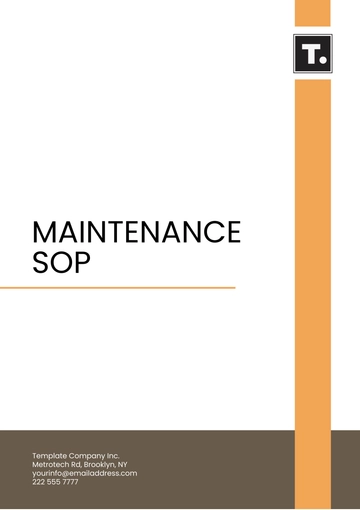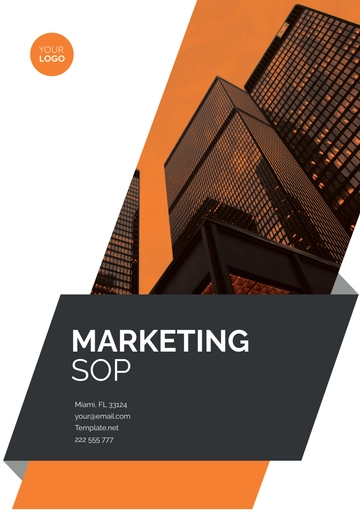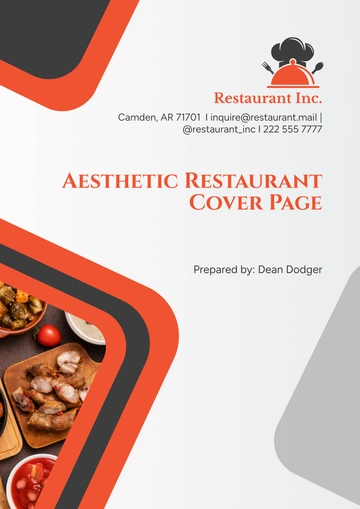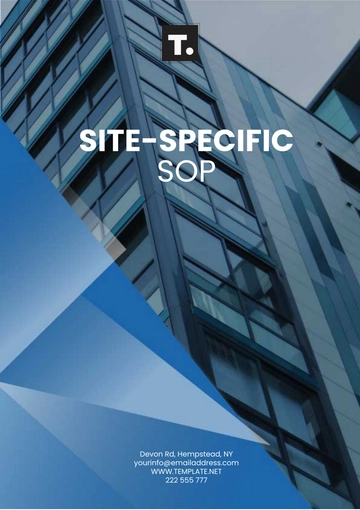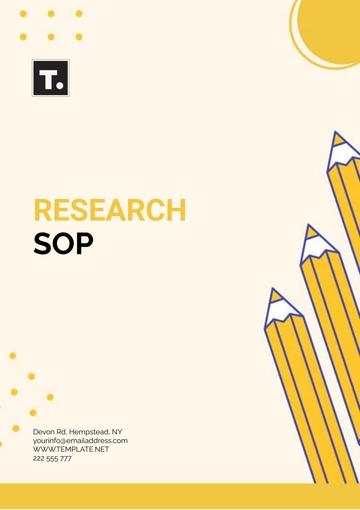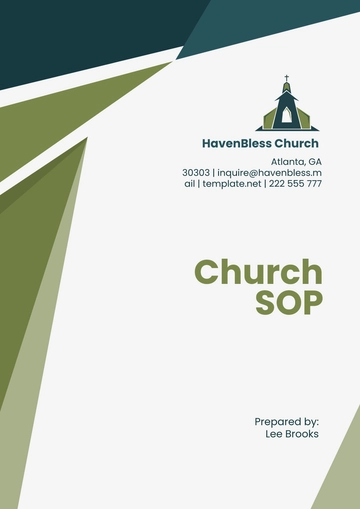Free Fashion SOP

The purpose of this SOP is to establish guidelines and best practices within the fashion industry to ensure consistency, quality, and efficiency in production, management, and marketing processes. This document serves as a comprehensive guide for professionals engaged in various aspects of fashion operations.
I. Introduction
The fashion industry is known for its ever-evolving trends, intense competition, and the need for innovation. At [Your Company Name], we recognize that maintaining a smooth and efficient operation is essential to meeting market demands, ensuring timely deliveries, and upholding our brand integrity. This Standard Operating Procedure (SOP) has been developed to provide clear guidelines for all departments involved in the fashion production process, from design and sourcing to marketing and distribution. It ensures consistency, reduces errors, and fosters a collaborative environment that drives our success in the global fashion market.
As the industry is regulated by various laws and standards, it is crucial for [Your Company Name] to adhere to applicable U.S. federal and state regulations, including labor laws, environmental guidelines, and consumer protection standards. This SOP serves as a reference to guide our teams in their daily operations, ensuring compliance with these legal requirements while maintaining a focus on quality, sustainability, and customer satisfaction. By following these procedures, we aim to enhance operational efficiency, mitigate risks, and support our commitment to delivering high-quality products to our customers.
A. Objectives
In a rapidly changing fashion landscape, it is crucial for [Your Company Name] to implement clear and effective practices that drive operational excellence and foster positive relationships with all stakeholders. By establishing defined procedures, we aim to navigate industry challenges while maintaining a high standard of quality and responsibility across all aspects of our operations.
Standardize production processes to ensure quality and consistency.
Facilitate effective communication among stakeholders.
Enhance efficiency in supply chain management.
Promote sustainable and ethical practices.
B. Scope
This SOP applies to all departments and functions within [Your Company Name], including design, production, marketing, sales, and retail. It encompasses the entire lifecycle of fashion product development, from initial concept creation to final retail delivery. Additionally, it covers processes related to sourcing materials, quality control, packaging, distribution, and customer service, ensuring consistent standards across all stages of operation and compliance with relevant industry regulations and best practices.
II. Design Processes
The design process is the foundation of any successful fashion brand. At [Your Company Name], we prioritize creativity and market insight to create designs that resonate with our target audience while ensuring practicality and manufacturability. This section outlines the critical stages of design, from concept development to technical execution, ensuring a seamless transition from idea to final product. Each stage is focused on innovation, quality, and alignment with market demands.
A. Concept Development
Market Research : In-depth analysis of current fashion trends, consumer preferences, and competitor offerings is conducted to identify emerging opportunities and define the design direction. Insights from customer feedback, social media, and fashion forecasts guide the development process.
Idea Generation : Creative brainstorming sessions are held to explore innovative concepts and visual styles that reflect market insights. Designers sketch initial ideas and collaborate with the product development team to assess practicality, aesthetics, and alignment with brand values.
Selection : Feasible and promising design ideas are selected based on market analysis, cost-effectiveness, and production capabilities. Designs that resonate with target demographics, fit seasonal trends, and meet production requirements are prioritized for further development.
B. Technical Design
Create Technical Drawings and Specifications: Detailed technical drawings, including dimensions, fabrics, trims, and construction details, are created for selected designs. These drawings serve as the blueprint for production, ensuring accuracy and consistency during manufacturing.
Develop Prototypes for Production Review: Prototypes are created to test the feasibility of the designs in real-world production settings. These prototypes undergo rigorous evaluation for fit, comfort, and durability, with input from designers, technical experts, and production teams.
Update Designs Based on Feedback: After prototype review, feedback from production teams, fit models, and quality control is gathered. Design adjustments are made to improve functionality, comfort, and production efficiency while maintaining aesthetic integrity.
III. Production Management
Effective production management ensures that [Your Company Name] consistently delivers high-quality fashion products while optimizing resources and meeting deadlines. This section outlines key processes for material sourcing and manufacturing, emphasizing the importance of selecting reliable suppliers, maintaining sustainability, and adhering to precise production stages. Each step is designed to uphold the brand’s commitment to quality, efficiency, and responsible practices.
A. Material Sourcing
Identify and evaluate reliable suppliers.
Verify material quality and sustainability standards.
B. Manufacturing Process
Stage | Description |
|---|---|
Cutting | Precise cutting of fabrics as per design specifications. |
Sewing | Assembly of fabric pieces to form garments. |
Finishing | Adding final touches and quality checks. |
IV. Marketing and Sales
In the competitive fashion industry, a strong marketing strategy is essential for building brand recognition and driving sales. At [Your Company Name], we focus on creating a distinct brand identity and employing effective sales strategies to reach and engage our target audience. This section outlines the key elements of branding and sales tactics, emphasizing the importance of consistency, digital engagement, and tailored outreach efforts to maximize impact and growth.
A. Branding
Establishing a cohesive and impactful brand identity is critical for differentiating [Your Company Name] in a crowded marketplace. Our branding strategy includes the development of consistent messaging, visual aesthetics, and core values that resonate with consumers. This identity is reinforced across all touchpoints, including advertising, packaging, and social media, ensuring that the brand remains recognizable and trustworthy. By conveying a clear and authentic brand story, we cultivate customer loyalty and market relevance.
B. Sales Strategy
Identify Target Audiences and Customize Outreach: Understanding our target audience is essential for crafting personalized and effective sales strategies. Through market research, we define key demographics and their unique preferences. Sales campaigns are tailored to these groups, ensuring relevant messaging that resonates with their needs and desires.
Leverage Digital Marketing Platforms for Broader Reach: With the rise of e-commerce and social media, digital marketing is a vital tool for expanding reach. [Your Company Name] utilizes platforms such as Instagram, Facebook, and influencer partnerships to connect with a broader, global audience. Digital ads, content marketing, and email campaigns further support direct engagement and sales growth.
V. Sustainability and Ethics
At [Your Company Name], sustainability and ethical responsibility are at the core of our business practices. We are committed to reducing our environmental footprint while ensuring fair labor practices across our supply chain. This section outlines our efforts to create a positive impact on both the planet and the communities we work with, highlighting the steps we take to operate responsibly, sustainably, and ethically throughout the entire fashion lifecycle.
A. Environmental Impact
To minimize the ecological footprint of our operations, [Your Company Name] focuses on sustainable practices at every stage of production. We prioritize the use of eco-friendly materials such as organic cotton, recycled fabrics, and non-toxic dyes to reduce waste and environmental harm. Additionally, we strive to optimize resource consumption, reducing energy use and water waste during manufacturing. Implementing closed-loop production systems and promoting responsible disposal methods for unsold or end-of-life products further ensures our commitment to environmental sustainability.
B. Labor Ethics
Upholding fair labor practices is essential to maintaining ethical operations. [Your Company Name] works closely with suppliers and manufacturers to ensure that all workers are treated with dignity and respect. We actively enforce a zero-tolerance policy for child labor, forced labor, and unsafe working conditions. Our partners must comply with international labor standards, including fair wages, reasonable working hours, and the right to unionize. Regular audits and transparent reporting ensure that these ethical standards are consistently met throughout the supply chain.
VI. Documentation and Compliance
Maintaining accurate and comprehensive documentation is critical to ensuring [Your Company Name] operates in full compliance with industry regulations and legal standards. This includes keeping detailed records of design approvals, material sourcing, manufacturing processes, labor practices, and environmental impact. Regular reviews and updates of our practices are conducted to ensure alignment with evolving industry norms, governmental regulations, and best practices. By adhering to these standards, we mitigate risks, enhance transparency, and promote accountability throughout our operations. Proper documentation not only supports regulatory compliance but also reinforces our commitment to sustainability, ethical labor practices, and continuous improvement.
This Fashion SOP provides the framework for [Your Company Name] to operate efficiently, ethically, and sustainably while ensuring consistent quality and compliance with industry regulations. By following these established processes, we reinforce our commitment to excellence, innovation, and responsibility, driving the continued success and integrity of our brand.
- 100% Customizable, free editor
- Access 1 Million+ Templates, photo’s & graphics
- Download or share as a template
- Click and replace photos, graphics, text, backgrounds
- Resize, crop, AI write & more
- Access advanced editor
Standardize operations with the Fashion SOP Template from Template.net. Fully editable and customizable, this template provides a clear structure for documenting standard operating procedures in the fashion industry. Easily editable in our Ai Editor Tool, ensuring a professional and organized approach to workflow management. Optimize your processes with this essential template.




